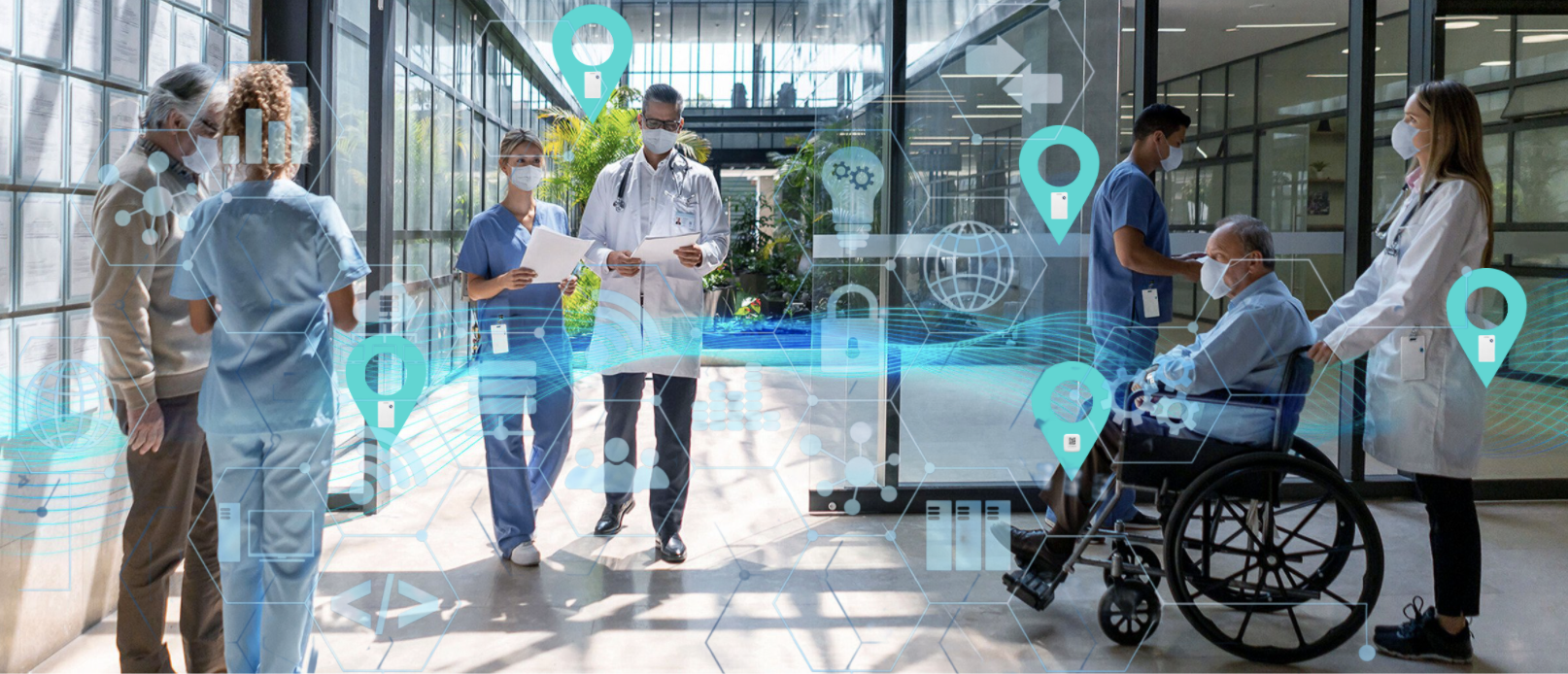Pediatric healthcare isn’t just about treating smaller adult conditions- it’s about creating an environment where children feel safe, seen and supported during some of the most vulnerable moments of their lives. In these environments, where emotions run high and unpredictability is constant, Real-Time Locations Services (RTLS) are emerging as quiet tools for success. RTLS uses BLE tags to track the location of resources and assets within a health system, bringing a new level of transparency and visibility in the pediatric care unit. From tracking mobile equipment, monitoring infant safety and alerting staff for timely intervention, RTLS ensures that healthcare teams are equipped to respond instantly and with actionable intelligence. What makes RTLS particularly useful in a pediatric setting is its ability to ensure communication and safety without disrupting pediatric operations.
Safety without the “Big Brother feel”
When caring for children in hospitals, safety concerns often extend beyond clinical issues. Pediatric units must remain constantly vigilant against incidents such as patient elopement, unauthorized area access, or mismatched patient transfers. RTLS provides a digital safety net by allowing staff to monitor real-time location data across wards. Wearable tags, typically secured on patient wristbands or clothing, can be programmed to trigger alerts if a child nears restricted zones, exits a safe area, or remains still for an unusual amount of time. Unlike traditional surveillance systems, RTLS operates invisibly in the background—children don’t feel watched, but they are undeniably protected. For example, a nurse could be instantly notified if a child who has just come out of sedation begins to wander, preventing potential injury. This unobtrusive oversight allows staff to focus on compassionate care, knowing that technology has its back if something goes amiss.
Giving Parents Peace of Mind
No parent wants to feel out of the loop when their child is hospitalized. Whether it’s a short visit or an extended stay, trust and communication between caregivers and families are critical. RTLS plays a pivotal role in building that trust. Hospitals can offer features like secure digital check-ins that prevent patient mix-ups and ensure custody protocols are followed rigorously. Some RTLS systems also integrate with hospital apps that allow authorized family members to receive updates on their child’s location—such as confirmation when they enter surgery or return to recovery. These subtle but powerful reassurances can go a long way in reducing parental anxiety and strengthening their confidence in the hospital’s safety measures. In high-stress scenarios, even a simple push notification telling a parent their child has returned to their room can transform worry into relief. It’s a human connection, powered by invisible technology that provides actionable intelligence
Staff Efficiency Meets Better Outcomes
In pediatric units, every moment saved can translate into better outcomes—and fewer tears. RTLS allows staff to locate critical assets like infusion pumps or transport beds without delay, reducing stress and wasted time. It also helps with assigning responsibilities during peak times or emergencies, since supervisors can view where team members are and what roles they’re currently fulfilling. Perhaps more impactful is RTLS’s ability to automate repetitive administrative tasks—like logging staff movements in and out of patient rooms or tracking compliance with hand hygiene protocols—thus freeing up clinicians to focus on patient-centered tasks. The cumulative effect of these improvements is substantial: reduced treatment delays, more face time with patients, fewer errors, and lower overall stress levels in fast-paced pediatric settings. And when caregivers are less frazzled, they’re better able to engage meaningfully with children, which improves the emotional quality of care.
The Future of Pediatric Care is Real-Time
As healthcare evolves toward more connected and intelligent systems, RTLS is becoming a cornerstone in the design of “smart” pediatric hospitals. It enables a level of coordination and responsiveness that static systems simply can’t match. Picture a scenario where emergency code teams are automatically rerouted to a child’s bedside the moment a critical change is detected, where lost items are a thing of the past, and where every movement—of staff, equipment, or patients—is accounted for without intruding on the care experience. Hospitals that adopt RTLS are not only solving today’s logistical challenges—they’re also preparing for tomorrow’s healthcare landscape, where interoperability, automation, and data-driven insights will define quality. For pediatric care, RTLS isn’t just a logistics tool. It’s a quiet guardian —one that promises to make hospitals safer, more empathetic, and more attuned to the unique needs of children and their families.

